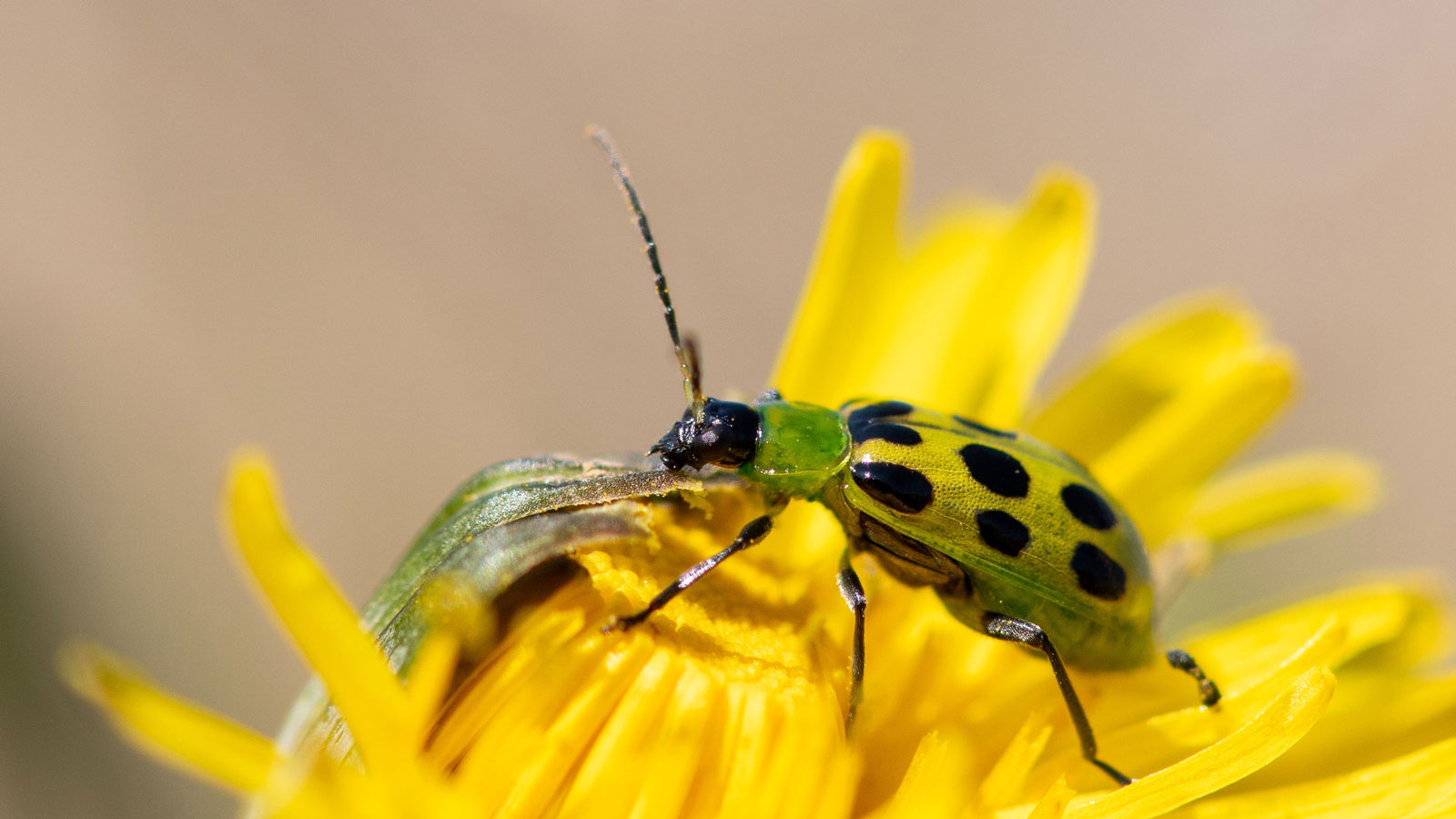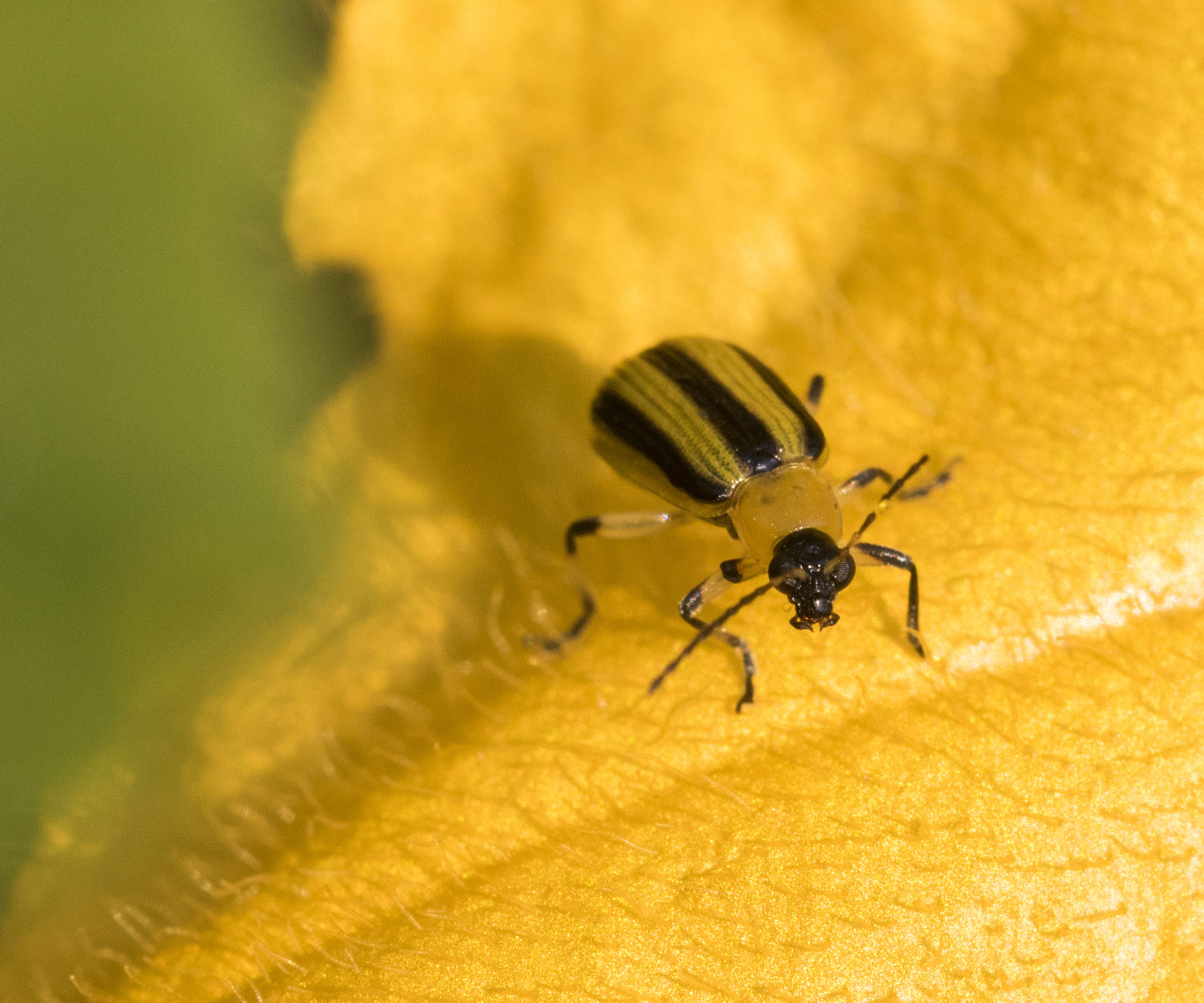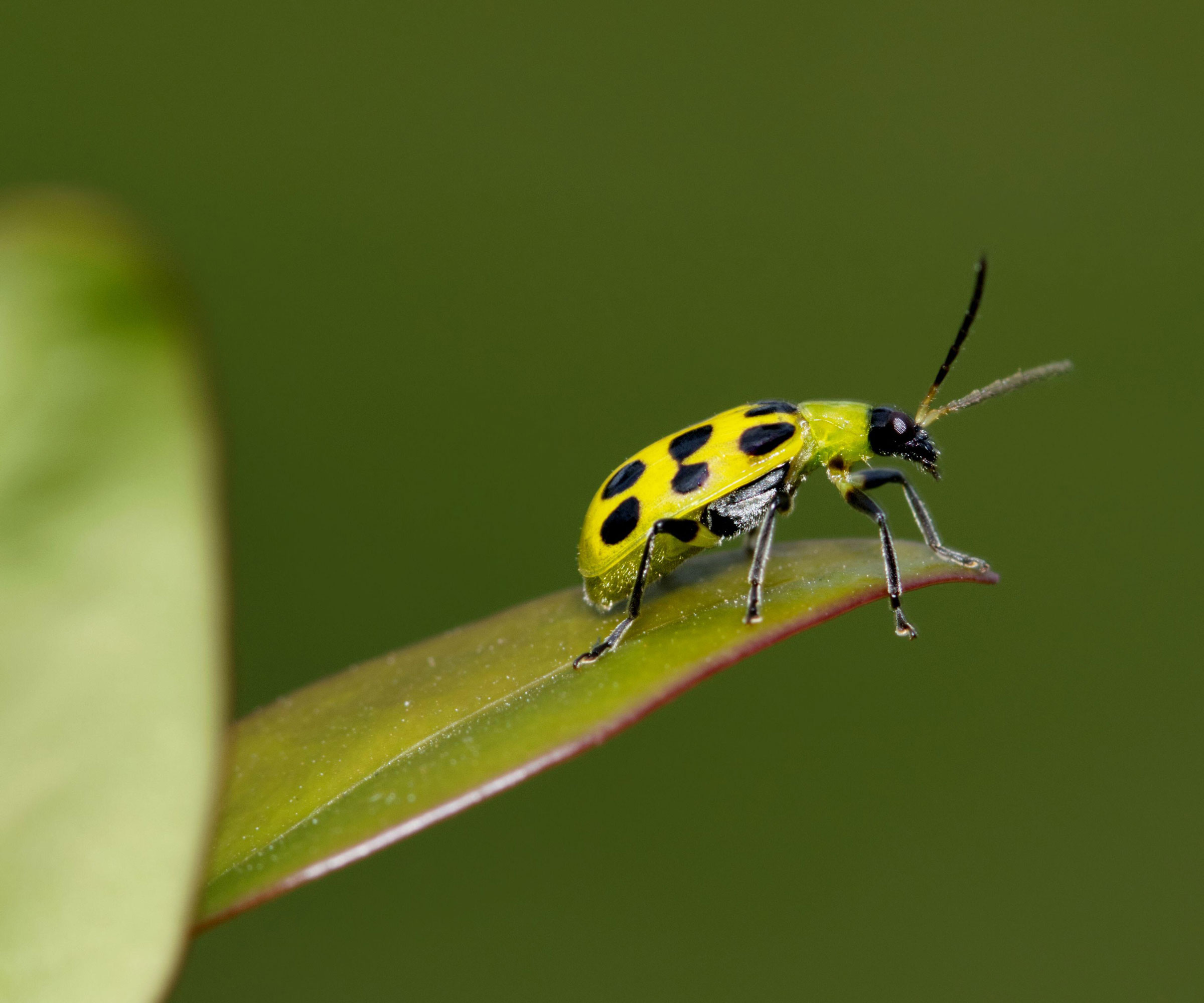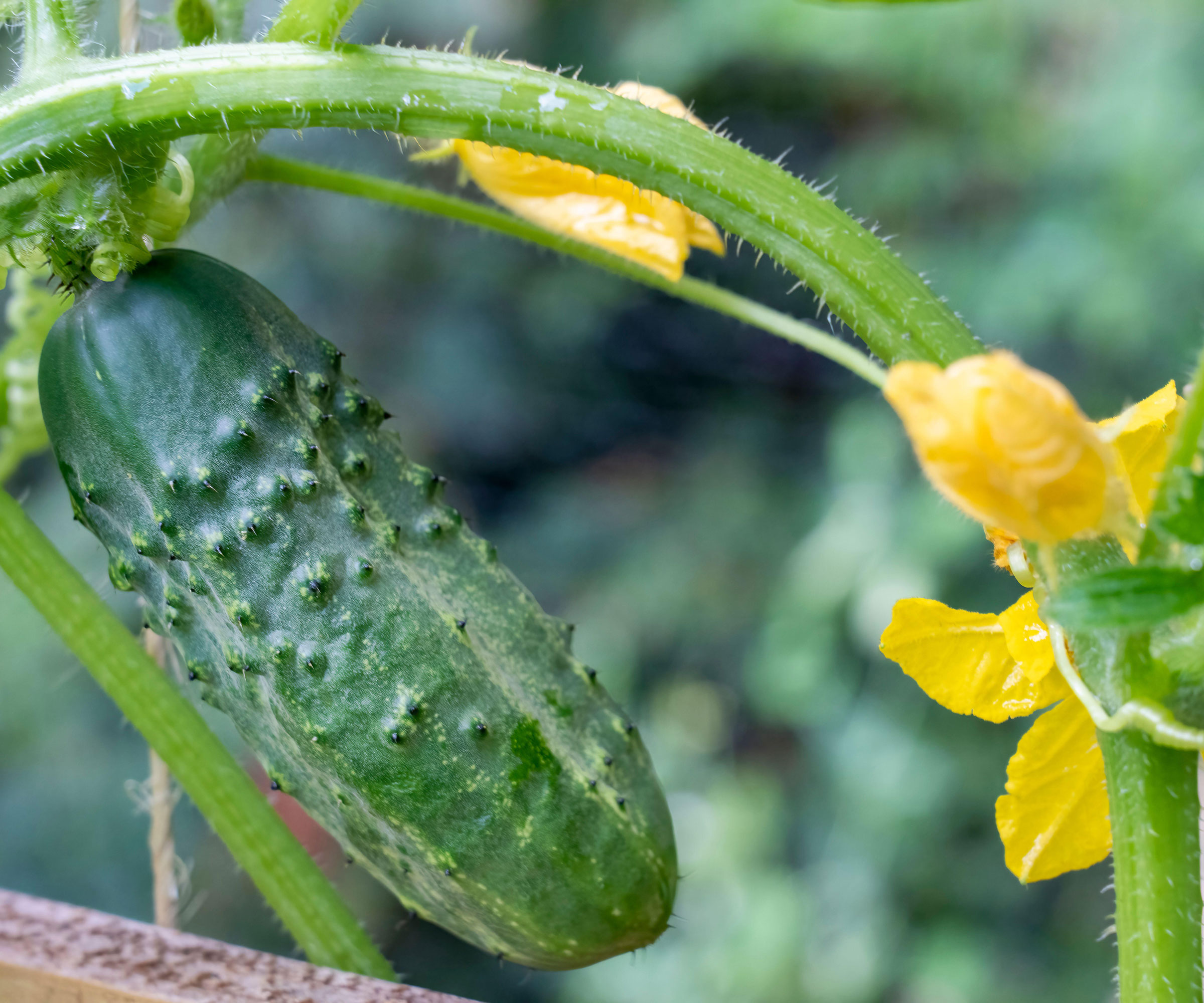
Your carefully nurtured cucumber plants are suddenly wilting despite all your best efforts. Or maybe it's your squash, melon or pumpkin plants that are affected. Perhaps you see a bug you don't recognise tucking into the leaves on a plant, which are suddenly looking shredded.
Either way, it's time to take action as it could mean you have an infestation of cucumber beetles. These are a real nuisance in the summer garden, causing damage to cucumber plants and other members of the squash family. However, with the right knowledge and techniques, you can effectively manage and control these pests if you find out how to grow cucumbers the right way.
If you think this problem might be affecting your plants, find out how to get rid of cucumber beetles to make sure your cucumbers are the stars of your salad bowl this summer.
What are cucumber beetles?
Cucumber beetles come in different types but the two most common ones have a greenish-yellow body with either black spots or black stripes. This patterning means they are easy to spot whether you are growing crops in a greenhouse or a vegetable garden. They are usually about a quarter of an inch long.
Striped cucumber beetles are found exclusively on cucumbers, squash and melons, where they damage both the leaves and the fruit. Spotted cucumber beetles also feed on corn, alfalfa and grasses.
Cucumber beetles live through the winter as adults in leaf litter and emerge in late May to early June. Until their favorite crops are ready they feed on the blossoms of other plants that flower early, such as apples and hawthorn.
Eggs of both the spotted and striped varieties are a pale orange-yellow color and are laid in groups. As soon as they hatch, larvae begin to feed on plants, meaning you need to find out how to get rid of them if you want to ensure you will still have some crops left when it's time to pick cucumbers.

How to spot cucumber beetles
If cucumber beetles are at work on your crop it will be easy to spot. 'Cucumber beetles can be identified by their characteristic appearance,' says Diana Cox, founder of The Gardening Talk. 'Look for beetles with yellow-green bodies, black spots, or black stripes.
'They may also have black heads and antennae. Additionally, these beetles tend to be active during the day, especially in warm weather. Check the undersides of leaves and the flowers of your cucumber plants for signs of their presence.'
You may notice something is wrong with your plants too. Infected plants wilt and leaves will become discolored before eventually dying. Wilting can spread rapidly and within a few days the entire plant can die.
Striped cucumber beetles can transmit the bacterial wilt pathogen. This infects a plant's vascular system, causing wilting. Once the plant is infected, it will die.
To find out if your plant is infected with bacterial wilt cut the affected stem in half. If you see a white mucus-like discharge it means the plant has the wilt bacteria.
How to get rid of cucumber beetles
To get rid of cucumber beetles first try filling shallow dishes with soapy water as this will attract cucumber beetles, who won't be able to survive in the liquid.
'You can also handpick beetles from your plants and drop them into a bucket of soapy water,' says Itamar Ben Dor, founder of Green-Life.blog. 'Or try applying a neem oil solution to your plants as a natural insecticide. Follow the instructions on the product for the correct dilution and application method.'
Neem is a favorite plant-based pesticide that prevents insects from feeding, which eventually kills them. This organic neem oil from Plantonix at Amazon has very good reviews.
Alternatively buy or make sticky traps designed to attract them. 'The best way to get rid of cucumber beetles is to put up a lure to trap them,' says Izzy Goldberg, a landscaper at White Maple Landscaping, in Farmington Hills, MI. 'There are many DIY instructions online for making your own traps. Most of them use yellow solo cups and some kind of adhesive.'
Watch your plants regularly for cucumber beetles when new leaves are developing. Once beetles are present, as well as taking action, monitor every couple of days for bacterial wilt.

How to prevent cucumber beetles
As with most things in the garden, prevention is typically the better, more natural option. There are a wide range of methods you can try to deter cucumber beetles from your crops.
- It's a good idea to try mulching around your plants to deny cucumber beetles the opportunity of laying their eggs.
- Pay attention to plants as leaves develop, when the plants can suffer defoliation and bacterial wilt.
- Be attentive until fruit has developed as larger plants can be affected by bacterial wilt as well.
- If you think a plant is infected or showing signs of wilt remove it from the rest of your crop to prevent disease spreading to other plants in your vegetable garden.
- Keep your yard tidy, removing weeds as cucumber beetles love to linger there, as well as clearing away leaves as adult beetles like to overwinter in them.
- Use floating row covers to prevent beetles from infecting plants. When plants begin to flower, remove the covers so bees and other insects can pollinate blossoms.
- Try cucumber companion planting and grow flowers like nasturtium and marigolds, which act as a repellent to cucumber beetles.
- Grow 'burpless' cucumber varieties, such as this Suyo Long variety from Burpee, which attract fewer cucumber beetles.
- 'Attract beneficial insects,' into your yard says Itamar Ben Dor. 'Encourage natural predators of cucumber beetles, such as ladybugs and lacewings, by planting flowers that attract them or by releasing them into your garden.'

Whether you are growing cucumbers vertically or in pots, keeping a lookout for common pests is key if you want to ensure you raise a healthy crop.
Implementing a good routine for pruning cucumbers can also be beneficial to reduce the risk of common diseases, and will make it easier for you to spot any infestations too.







